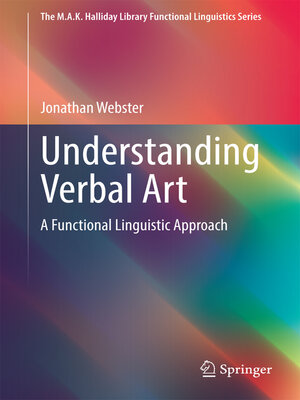Understanding Verbal Art
ebook ∣ A Functional Linguistic Approach · The M.A.K. Halliday Library Functional Linguistics Series
By Jonathan Webster

Sign up to save your library
With an OverDrive account, you can save your favorite libraries for at-a-glance information about availability. Find out more about OverDrive accounts.
Find this title in Libby, the library reading app by OverDrive.



Search for a digital library with this title
Title found at these libraries:
| Library Name | Distance |
|---|---|
| Loading... |
This book applies linguistic analysis to the poetry of Emeritus Professor Edwin Thumboo, a Singaporean poet and leading figure in Commonwealth literature. The work explores how the poet combines grammar and metaphor to make meaning, making the reader aware of the linguistic resources developed by Thumboo as the basis for his unique technique.
The author approaches the poems from a functional linguistic perspective, investigating the multiple layers of meaning and metaphor which go into producing these highly textured, grammatically intricate works of verbal art. The approach is based on Systematic Functional Theory, which assists with investigating how the poet uses language (grammar) to craft his text, in a playful way that reflects a love of the language. The multilingual and multicultural experiences of the poet are seen to have contributed to his uniquely creative use of language.
This work demonstrates how Systematic Functional Theory, with its emphasis on exploring the semogenic (meaning-making) power of language, provides the handle we need to better understand poetic works as intentional acts of meaning.
The verbal art of Edwin Thumboo illustrate Barthes' point that "Bits of code, formulae, rhythmic models, fragments of social languages, etc. pass into the text and are redistributed within it, for there is always language before and around the text."
With a focus on meaning, this functional analysis of poetry offers an insightful look at the linguistic basis of Edwin Thumboo's poetic technique. The work will appeal to scholars with an interest in linguistic analysis and poetry from the Commonwealth and new literatures, and it is also well suited to support courses on literary stylistics or text linguistics.







